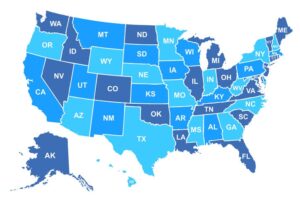25% of workers don't trust their employers

The foundation of people’s most important personal relationships is trust. As more employees seek out positions that are as flexible as they are fulfilling, employers are seeing them reexamine the need for this foundational element in the workplace as well. Good leadership won’t just recognize this, they’ll set the example for it.
New research from the Massachusetts Institute of Technology shows that trusting employees are 260% more motivated to work, have 41% lower rates of absenteeism, and are 50% less likely to look for another job. With the recent high rates of attrition and dissatisfaction in the workplace, it is unsurprising that they also found one in four workers don’t trust their employer.
“The relationship between employee and employer has really been put to the test lately,” says Sarah Fern, chief people officer at global workforce platform Velocity Global. “An example could be the lack of transparency that leads employees to lose faith that they are being compensated fairly, or a lack of office oversight that has made an employer suspicious of how employees are using their workday. The responsibility to take the initiative and build that trusting relationship lies with us as employers.”
Read more: Education platforms are the key to closing the gender wage gap in tech
From the time a prospective employee views an online job posting, the building blocks of a trusting relationship with an organization are falling into, or out of, place. A quick way to destroy trust, Fern says, is by putting information out isn’t true.
“Make sure that your job ads and job descriptions reflect what kind of company you have and what kind of culture you want to build,” she says. “We need to make sure that what we say is actually to be found. If I say we are transparent, we are empathetic, we have to be all of those wonderful-sounding words. As employers and as leaders, we’ve got to be very mindful and make sure that people can find these things, whether it’s remote, hybrid or in the office.”
Leadership needs to be equipped with the tools to manage people from afar just as effectively as they would in an office. Here, Fern says, is where micromanagement and hard demands about being in-person will leave leaders on the wrong side of their workforce. The focus should be on putting faith in employees, and measuring the outcome of work versus the hours put in, she says.
Helping their clients to engage with tens of thousands of employees, and having its own workers spread across 53 countries, Velocity Global has seen the positive effects of a work-from-anywhere policy and mastering long-distance management.
“We have a huge number of people coming to our website looking for jobs because they’re craving that trust; they’re craving that freedom,” Fern says. “When you have work practices and cultures that can work anywhere, you will immediately attract and retain a huge part of the workforce that you would not otherwise be able to.”
Read more: 4 ways to create a rock-solid culture for all your employees
In order to be a successful leader in today’s evolving workplace, Fern emphasizes the need to evaluate and amend old practices when necessary. A leader who was highly effective in the office may find themselves struggling to connect over Zoom, for example, and these challenges require leaders to fundamentally rethink the qualities that are now needed in this hybrid, remote, trusting, flexible framework, she says.
Organizations also need to have the ability to communicate with and make people from diverse backgrounds feel connected to their work. Belonging means different things to different cultures, different companies and different setups, Fern says. The notion of listening and having a platform to remove friction, therefore providing a borderless experience, is powerful and impactful, she says. And it starts with giving their time.
“You open your doors, whether virtual or in person, and you make yourself available as a leader,” Fern says. “I can say, ‘I hear you, I see you, I support you,’ but if I’m never available, you’re not going to trust me because you don’t believe it. Ask the questions, ‘How can I help you? How can I support you?'”
Read more: Creating culture fit for Gen X, Gen Z, millennials and boomers
Regardless of how or where people are working, leaders who establish and maintain this level of trust within their organization will be able to attract and retain a more diverse, talented and loyal workforce.
“If you have a good leader, it doesn’t matter where you are,” Fern says. “It’s about trust, flexibility, open communication, transparency and listening. We’ve put these boundaries in place over decades, and suddenly to be free of that, it’s simply quite thrilling.”



